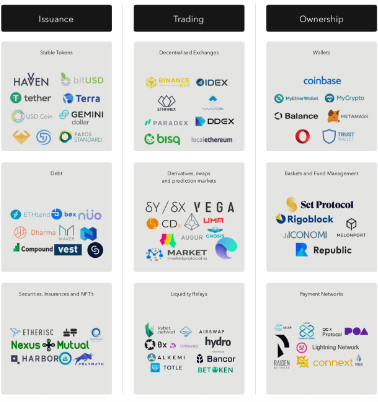To manage risk and maximize returns, it’s crucial to diversify your cryptocurrency portfolio. This can be done by investing in various cryptocurrencies and different asset classes, including stablecoins and non-fungible tokens. Selecting assets for a diversified portfolio should also consider factors such as market trends and regulatory changes.

Why Diversify Your Cryptocurrency Portfolio?
Diversifying your cryptocurrency portfolio is crucial for minimizing risk and increasing potential returns. Cryptocurrencies are known for their volatility, and their prices can swing significantly in short time periods. By investing in multiple cryptocurrencies, traders can distribute their risk and minimize the impact of market fluctuations on their portfolio. Furthermore, different cryptocurrencies may perform better under varying market conditions, and diversification enables traders to seize potential gains in different scenarios. Finally, diversifying a portfolio can also offer exposure to various sectors of the cryptocurrency market, such as privacy coins or decentralized finance (DeFi) tokens, which can help create a balanced portfolio and provide long-term growth potential.
How to Diversify Your Cryptocurrency Portfolio
Diversifying your cryptocurrency portfolio is a vital strategy to manage risk and maximize returns in the volatile cryptocurrency market. To diversify, traders can invest in a range of cryptocurrencies with varying levels of risk and growth potential. They can also consider other asset classes, such as stable coins and non-fungible tokens, which offer different benefits and risk profiles.
Choosing assets for a diversified portfolio requires consideration of factors such as market trends, regulatory changes, and the underlying technology and use case of each project. Traders should also assess their risk tolerance and investment goals when diversifying their portfolio. Diversification reduces exposure to a single cryptocurrency’s price movements and can potentially increase long-term returns.
Setting Investment Goals and Risk Tolerance
Establishing investment goals and risk tolerance levels is a crucial step in diversifying a cryptocurrency portfolio. Investment goals vary depending on an individual’s financial situation and objectives, whether it’s short-term gains or long-term growth. On the other hand, risk tolerance refers to an individual’s willingness to accept risks in pursuit of higher potential returns. Some traders may be comfortable with higher risk levels, while others may prioritize minimizing risks over maximizing returns. By setting clear investment goals and risk tolerance levels, traders can make informed decisions about diversifying their portfolio to align with their objectives and preferences.
Types of Cryptocurrencies to Include in Your Portfolio
Traders can diversify their cryptocurrency portfolio by including various cryptocurrency types, such as well-established cryptocurrencies like Bitcoin and Ethereum with high adoption rates, innovative altcoins like Polkadot and Cardano, stablecoins that offer a stable investment option, non-fungible tokens (NFTs) with varying levels of value and growth potential, and privacy-focused cryptocurrencies like Monero and Zcash. Diversifying with a mix of these cryptocurrency types can help traders manage their risk and potentially benefit from different market conditions and trends. By including a range of cryptocurrencies in their portfolio, traders can build a well-rounded investment strategy that aligns with their risk tolerance and investment goals.
Monitoring and Rebalancing Your Portfolio
Regularly monitoring and rebalancing a diversified cryptocurrency portfolio is crucial to maintaining its performance. Due to the volatile nature of the cryptocurrency market, individual currencies can experience significant price fluctuations, which can affect the portfolio’s overall composition. By regularly reviewing and adjusting the portfolio, traders can ensure that it aligns with their investment goals and risk tolerance levels. Rebalancing involves selling or buying assets to maintain the desired allocation and weightings, which can help to optimize returns and manage risk. Staying up-to-date with the latest market news and trends is also essential to make informed rebalancing decisions and adjust the portfolio as needed.
Best Practices for Diversifying Your Cryptocurrency Portfolio
When diversifying your cryptocurrency portfolio, there are several best practices to keep in mind:
Conduct thorough research on each cryptocurrency before investing to understand its technology, use case, and potential risks and rewards.
Set clear investment goals and risk tolerance levels to guide portfolio diversification decisions.
Consider investing in a range of cryptocurrency types to balance risk and potential returns.
Regularly rebalance the portfolio to maintain the desired asset allocation and adjust for market changes.
Monitor market trends and regulatory changes that could impact the portfolio’s performance.
By following these best practices, traders can build a well-diversified cryptocurrency portfolio that maximizes returns while minimizing risk.
To create a well-diversified cryptocurrency portfolio, traders should adhere to several best practices:
First, conduct thorough research on each cryptocurrency to understand its technology, use case, and potential risks and rewards before investing.
Next, set clear investment goals and determine your risk tolerance level to guide portfolio diversification decisions.
Investing in a range of cryptocurrency types can help balance risk and potential returns.
Regularly rebalance the portfolio to maintain the desired asset allocation and adjust for market changes.
Stay informed of market trends and regulatory changes that could impact the portfolio’s performance.
By following these best practices, traders can build a well-diversified cryptocurrency portfolio that maximizes returns while minimizing risk.
Conclusion
To conclude, diversification is a key strategy for managing risk and maximizing potential returns in cryptocurrency trading. Investing in multiple cryptocurrencies allows traders to reduce the impact of market volatility on their portfolio. Clear investment goals and risk tolerance levels are also important for guiding portfolio diversification decisions. Regularly monitoring and rebalancing the portfolio ensures that it remains aligned with investment objectives and risk tolerance levels. Staying informed about market news and trends can help traders make informed decisions about portfolio management. A well-diversified cryptocurrency portfolio and proper risk management can help traders achieve greater profitability and long-term success in the cryptocurrency market.






